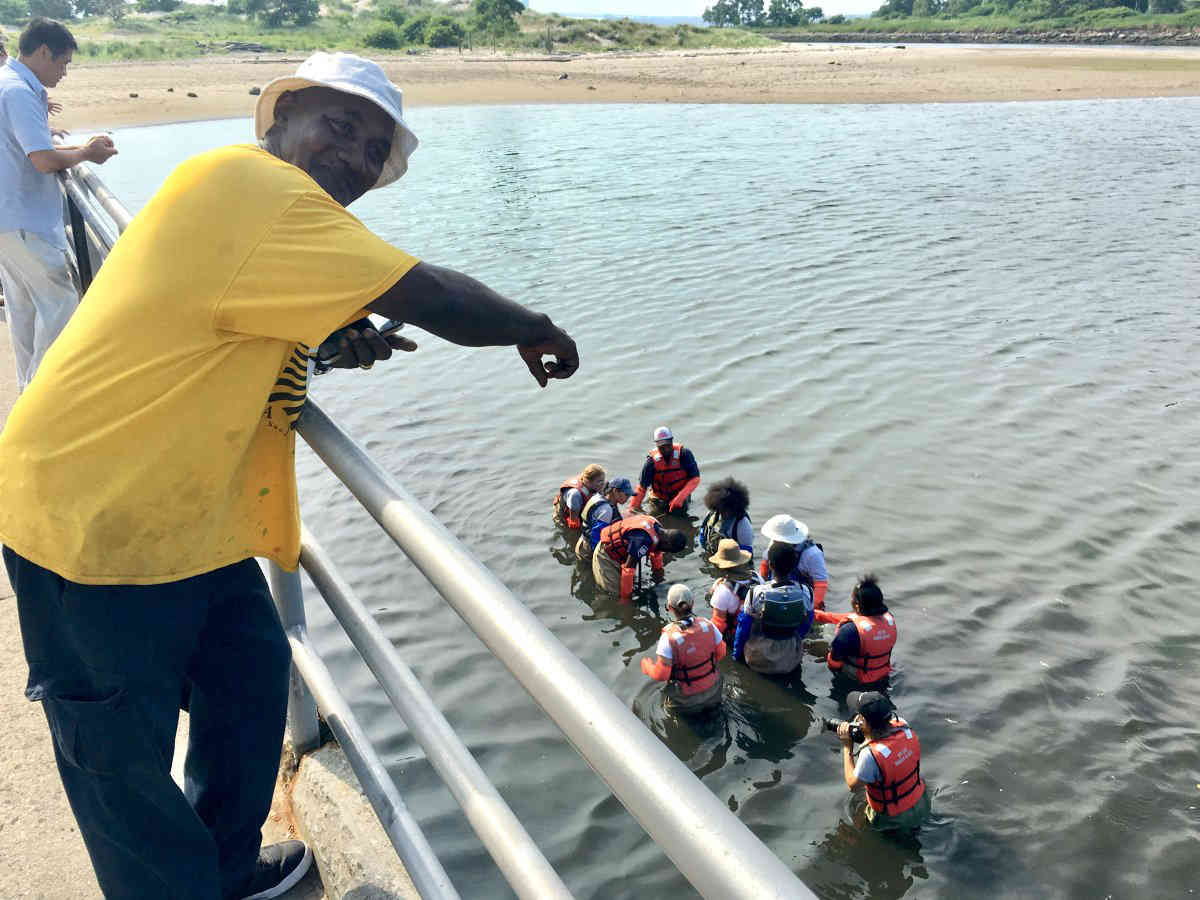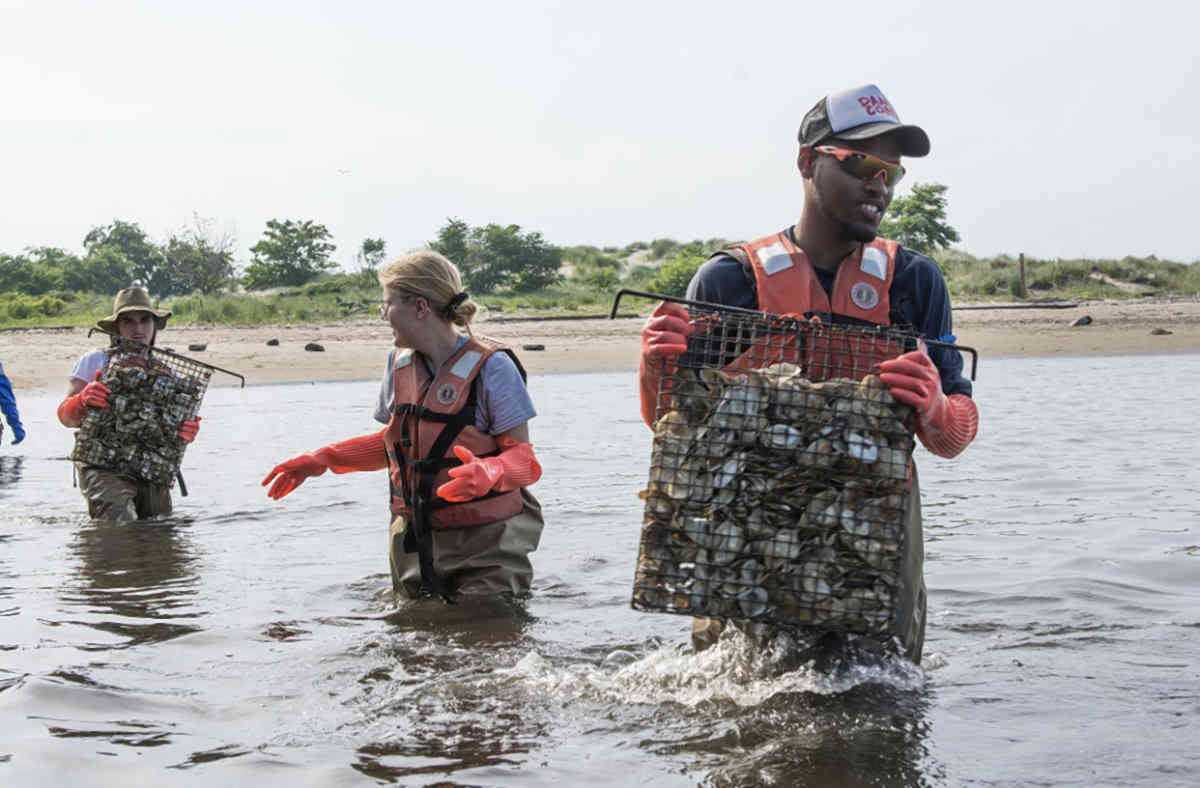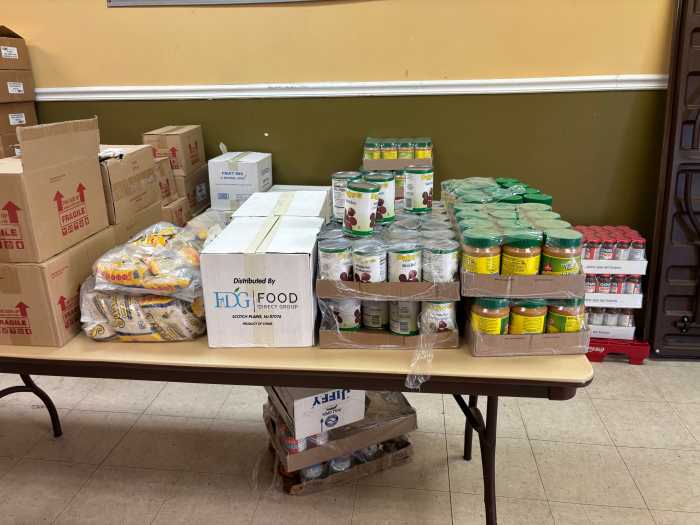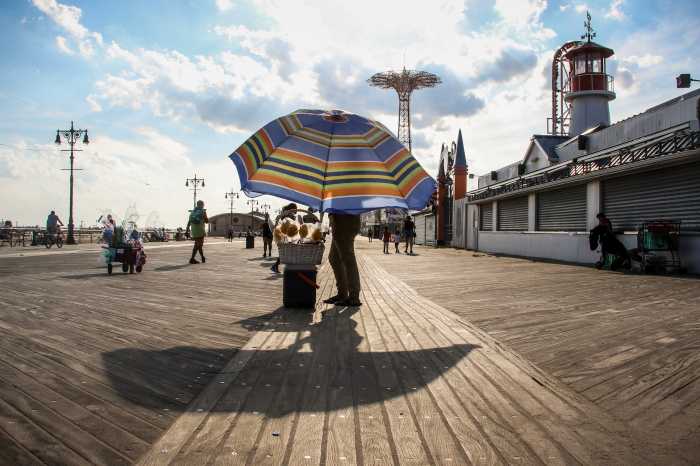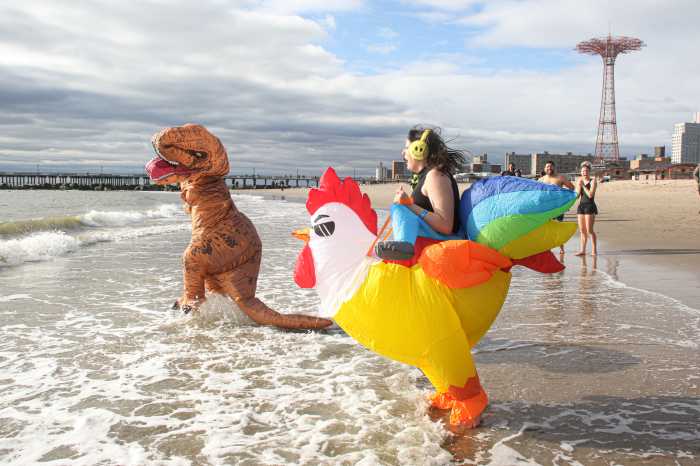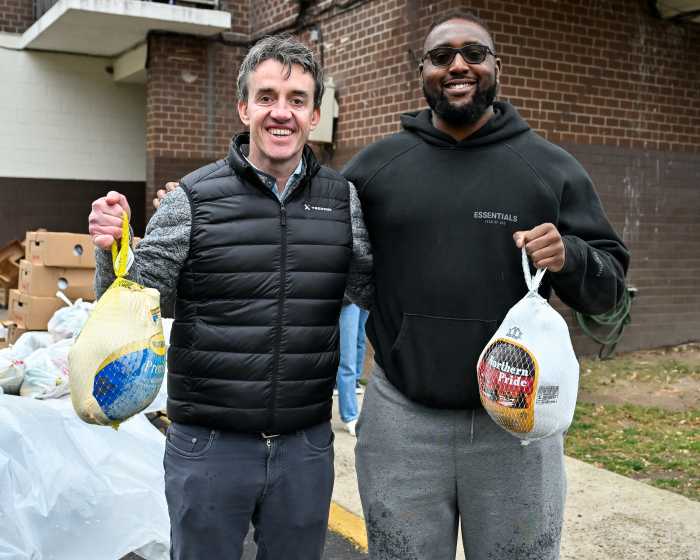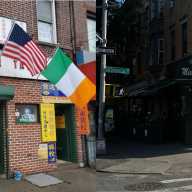Ecologists, fishermen, and school students flocked to Coney Island’s Kaiser Park on Monday to plant thousands of baby oysters in Coney Island Creek as part of an ongoing effort to cleanup the polluted canal.
“It went really well,” said Tanasia Swift, an organizer behind the cleanup.
The project aims to repair local rivers by cultivating one billion live oysters the water around New York City by 2035. The molluscs clean the water, house other types of marine life, and create a buffer that prevents beach erosion, according to Swift.
“They provide a habitat for other fish and critters,” Swift said. “If they grow large enough, they can protect shorelines.”
Swift — as part of the Billion Oyster Project — first planted 134,000 oysters in Coney Island Creek last year as part of their ongoing effort to flood the city’s waterways with shellfish-filled reefs.
On Sept. 30, project honchos surfaced their oyster contraption to check on their progress, and replenish it with new oyster babies — giving the gathered students a chance to learn about marine life.
“That was really exciting for the kids,” said Swift.
The oyster project is a much-needed cleansing for Coney Island Creek, according to Swift, citing the area’s history as a dumping ground for industrial facilities and residential complexes that still contains traces of arsenic, cyanide, and benzene.
Local pols have long promised to get the creek designated as a Superfund site, qualifying it for federal funding, but have not yet succeeded — placing the cleanup burden on local groups like Swift’s.
And while the oyster reef will take years to visibly improve the contaminated waterway, Monday’s maintenance check revealed some encouraging signs, according to Swift.
“What we did see is that there’s a lot of wild oysters that have settled into the rocks and Coney Island Creek,” she said, adding that the wild crustaceans are more mature than the baby oysters planted by the non-profit. “It says that there’s food, and they’re able to grow at the location.”
